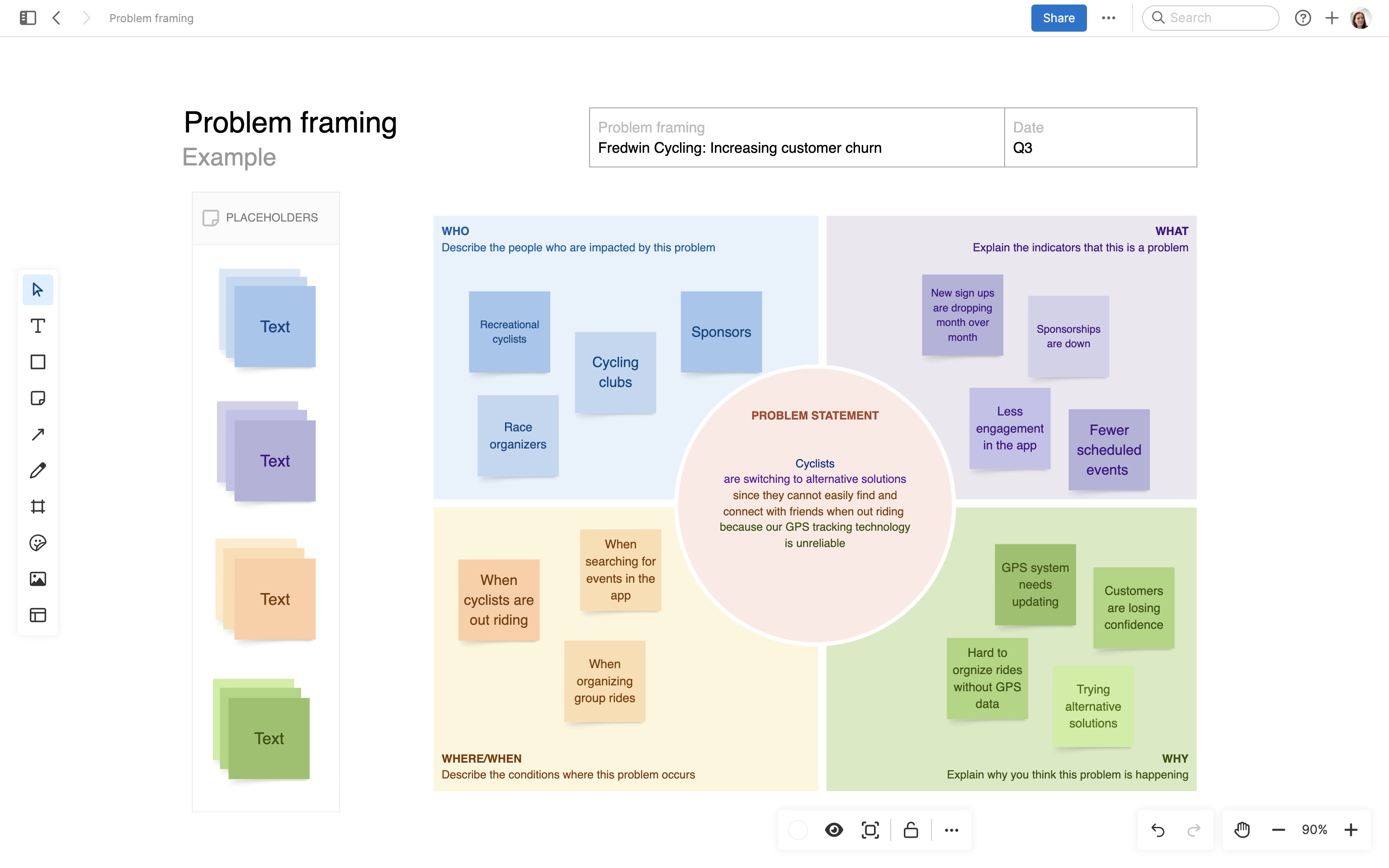Problem framing template
Clearly define and understand a problem you aim to solve
Use template
About the problem framing template
You cannot solve what you do not understand. Problem framing helps you view a problem from multiple angles — clarifying what you are dealing with, its potential causes, and the impact to customers or the team. It is especially beneficial when dealing with complex or ambiguous problems.
This template is useful at the outset of a project or initiative — for instance, during ideation and planning phases before you decide to invest resources. It can also be helpful when you encounter a customer challenge that more than one team has a stake in. Gathering feedback from cross-functional teams allows you to explore different facets of the issue.
Prioritize empathy and data-driven insights to validate your assumptions. Ultimately, a well-framed problem leads to better decision-making and a more strategic approach to problem-solving.
Best practices
Guide the process of problem identification and analysis.
State the problem Clearly define the problem you are addressing. Write a concise summary that captures the essence of the issue — including who it impacts, where and when it occurs, and why you believe it is happening.
Identify who is impacted List the individuals, teams, or customers involved with or affected by the problem. Add notes describing the role of each stakeholder in relation to the problem.
Delve into the details Capture key indicators that show what is happening and the effect. Explore where and when this problem occurs to ensure you have a full understanding of the situation.
Uncover the cause Document the underlying causes of the problem and why it is important to address them. Reflect upon how stakeholders will be impacted and advantages to solving the problem — so you can align on next steps.